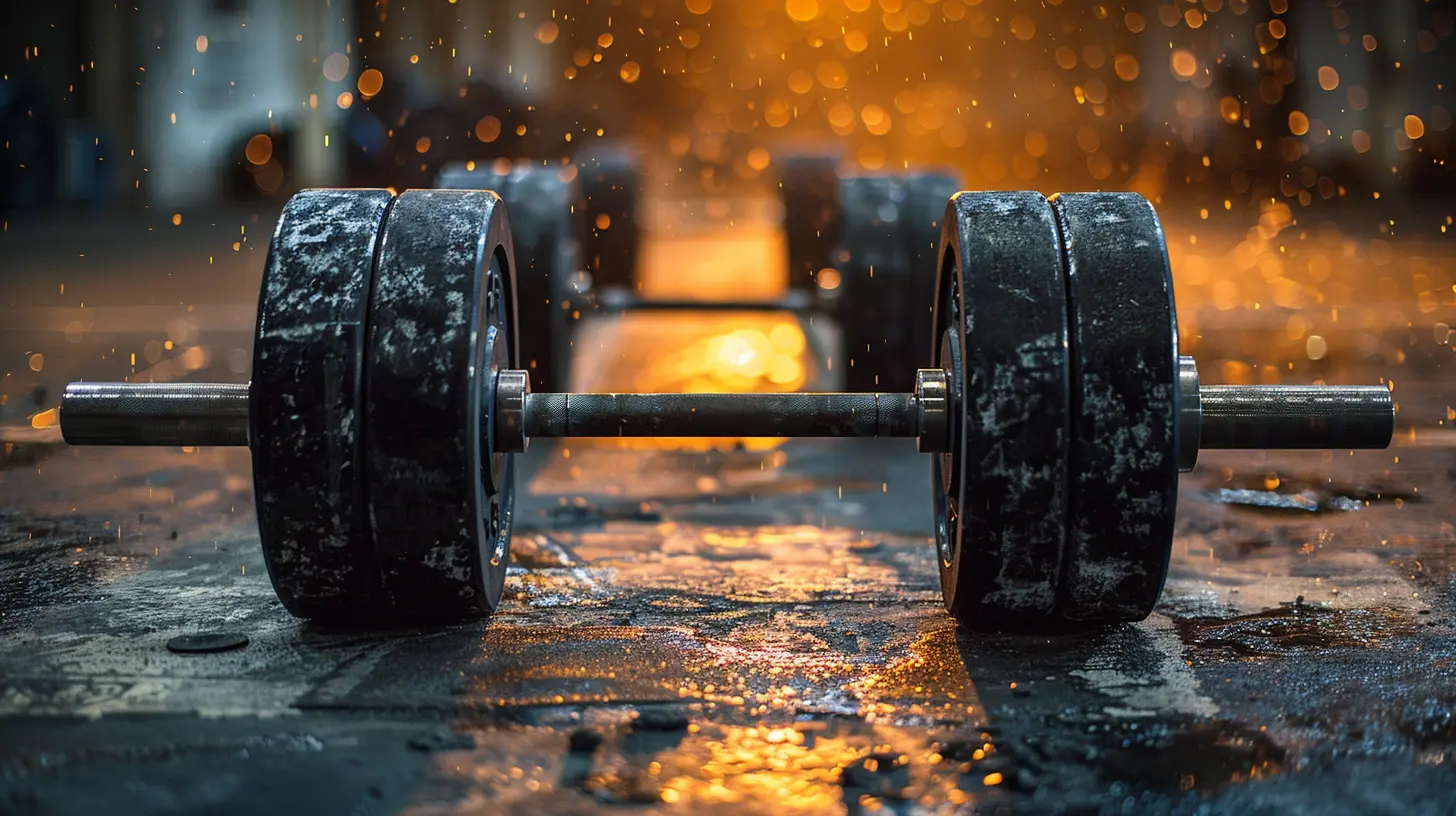The Role of Strength Training in Marathon Preparation
20 September 2025
Running a marathon is no joke. It’s 26.2 miles of grit, determination, and mental toughness. Most people think marathon prep just means pounding the pavement for miles and miles. Guess what? That’s only half the story. If you want to truly conquer those 26.2 miles—and feel strong while doing it—there’s something you can’t ignore: strength training.
Now, before you roll your eyes and think, “I’m a runner, not a bodybuilder,” hear me out. Strength training isn’t about bulking up or throwing barbells around like a pro powerlifter. It’s about building a strong, balanced, injury-resistant body that can not only handle the mileage but thrive during it.
Let’s break down exactly why strength training plays a crucial role in marathon prep—and how you can make it work for you.
Why Strength Training Matters for Marathon Runners
It Makes You a More Efficient Runner
Ever notice how your form starts to fall apart toward the end of your long runs? Your shoulders slump, stride shortens, and feet shuffle like you're dragging bricks. That’s fatigue setting in. And guess what fights fatigue? Strong muscles.Strength training builds up the muscles you use while running—glutes, hamstrings, quads, calves, hip flexors, and your core. The stronger they are, the better they support your body, especially when you’re tired. That means better posture, smoother strides, and greater running economy (aka using less energy to run faster or longer).
Injury Prevention Is a Huge Deal
Runners are notorious for injuries, right? Think shin splints, IT band syndrome, runner’s knee, and stress fractures. A big reason? Muscle imbalances and weaknesses.When certain muscles are weak (like your glutes or core), other parts of your body overcompensate. That messes up your mechanics and leads to injuries. Strength training helps correct those imbalances. It strengthens the stabilizer muscles that support your joints and improves your coordination and balance. The result? Fewer injuries and more consistent training.
It Boosts Your Speed and Endurance
This one might surprise you. Strength training can actually make you faster—even in long-distance events like marathons. How? Two main reasons: more power and greater fatigue resistance.When your muscles are stronger, each stride propels you forward with more force and efficiency. Plus, strong muscles fatigue more slowly, so you don’t hit that dreaded wall as hard or as early. You’re not running with dead legs at mile 20—you’re powering through it.
How to Incorporate Strength Training Into Your Marathon Plan
Okay, so strength training is important. But when and how do you fit it into an already packed marathon schedule? Good news—you don’t need to spend hours in the gym. A couple of well-placed sessions per week can make a big difference.Timing Is Key
The best time to start strength training is several months before your race—right when your base mileage is building, but the long runs haven’t peaked yet. This lets you build a solid foundation without overtaxing your body.Aim for two to three strength workouts per week in the early phases of your marathon training. As your running mileage increases closer to race day, you can scale back to once or twice a week to maintain strength without adding too much fatigue.
Keep the Workouts Short and Focused
You don’t need to become a full-time gym rat. 30–45 minutes per session is plenty. Focus on compound movements—exercises that work multiple muscle groups at once. Think squats, lunges, deadlifts, pushups, rows, planks.The goal isn’t to max out weights or chase muscle pumps. You’re building functional strength that supports your running.
Here’s a sample workout layout:
- Warm-up: Dynamic stretches, bodyweight moves (5–10 minutes)
- Legs: Squats, lunges, step-ups (2–3 sets of 8–12 reps)
- Core: Planks, Russian twists, bird dogs (2–3 sets)
- Upper Body: Push-ups, dumbbell rows, shoulder presses (2–3 sets)
- Cool-down: Static stretches and foam rolling
Don’t Forget Mobility and Stability
It’s not just about lifting. Runners need mobility (your joints moving freely) and stability (your body staying steady). Include exercises like single-leg balances, resistance band work, and foam rolling to keep everything moving smoothly and prevent tightness.
Best Strength Exercises for Runners
So, what are the go-to exercises that give runners the best bang for their buck? Let’s break it down by muscle group.Lower Body
These are your running engines. Strong legs mean strong strides.- Squats – Builds overall leg strength and mirrors running motion.
- Lunges – Great for unilateral strength and balance.
- Deadlifts – Targets hamstrings and glutes, key for propulsion.
- Step-Ups – Mimics the push-off phase of running.
Core
Your core is your powerhouse. It keeps you upright, stable, and aligned during your runs.- Planks (front and side) – Builds endurance and stability.
- Bird Dogs – Enhances coordination and spinal control.
- Russian Twists – Works rotational core muscles for better balance.
Upper Body
Yep, your arms and shoulders matter too. Your arm swing helps with rhythm and momentum.- Push-ups – Builds chest, shoulders, and triceps.
- Dumbbell Rows – Strengthens back and improves posture.
- Overhead Press – Stabilizes shoulders and upper back.
Strength Training Throughout Marathon Training Stages
Your strength sessions can and should adapt as your training progresses. Here’s what that can look like:Base Phase (Weeks 1–6)
- Focus: Build strength and correct imbalances.- Frequency: 2–3 sessions/week
- Volume: Higher reps, lighter weights
- Movements: Full-body routines, bodyweight and resistance bands
Build Phase (Weeks 7–14)
- Focus: Maintain strength, increase power- Frequency: 2 sessions/week
- Volume: Moderate reps, moderate weights
- Movements: Add plyometrics (jump squats, box jumps) for explosive strength
Peak Phase (Weeks 15–18)
- Focus: Maintain strength without overloading- Frequency: 1–2 sessions/week
- Volume: Lower reps, lighter weight
- Movements: Short, efficient workouts with core focus
Taper Phase (Last 2–3 Weeks Before Race)
- Focus: Recovery and freshness- Frequency: 1 light session/week or rest completely
- Volume: Very low
- Movements: Mobility work, foam rolling, gentle core
The Mental Edge: Confidence from Strength
There’s another benefit to strength training that’s easy to overlook—confidence. Knowing your body is strong and capable gives you a mental edge.When the race gets tough (and it will), you’ll tap into more than your endurance. You’ll rely on the strength you’ve built—physically and mentally—to push through those dark miles. That kind of mental toughness can make or break your marathon day.
Common Myths About Strength Training for Runners
Let’s bust a few myths that keep runners from embracing strength training.“I’ll Bulk Up and Get Slower”
Nope. It’s not easy to gain size, especially when you’re running. Strength training doesn’t automatically equal bulk—especially when you’re training smart with moderate weights and high reps.“I Don’t Have Time”
Running takes time, no doubt. But just 1–2 short strength sessions a week can reduce your injury risk and improve your performance. Think of it as quality over quantity.“I’ll Be Too Sore to Run”
Only if you overdo it. Start slow, listen to your body, and avoid heavy lifting the day before speed or long runs. Your body adapts quickly, and soreness will stop being an issue once you're consistent.Final Word: Strength Equals Staying Power
Running a marathon is more than just logging miles. It’s about preparing your entire body to handle the challenge. Strength training isn’t an optional extra—it’s a secret weapon.You don’t need to spend hours in the gym or lift like a powerlifter. You just need a plan that supports your running goals. If you put in the work—on and off the road—you’ll not only make it to the finish line, you’ll do it stronger, faster, and with a smile on your face.
So next time you're tempted to skip those squats or ditch the dumbbells? Remember: the stronger you are, the farther you’ll go.
all images in this post were generated using AI tools
Category:
MarathonAuthor:

Uziel Franco
Discussion
rate this article
1 comments
Thalor McClintock
Strength fuels endurance; balance is key.
October 4, 2025 at 5:04 AM

Uziel Franco
Thank you! Absolutely, strength training enhances endurance while ensuring balance helps prevent injuries and optimize performance.


